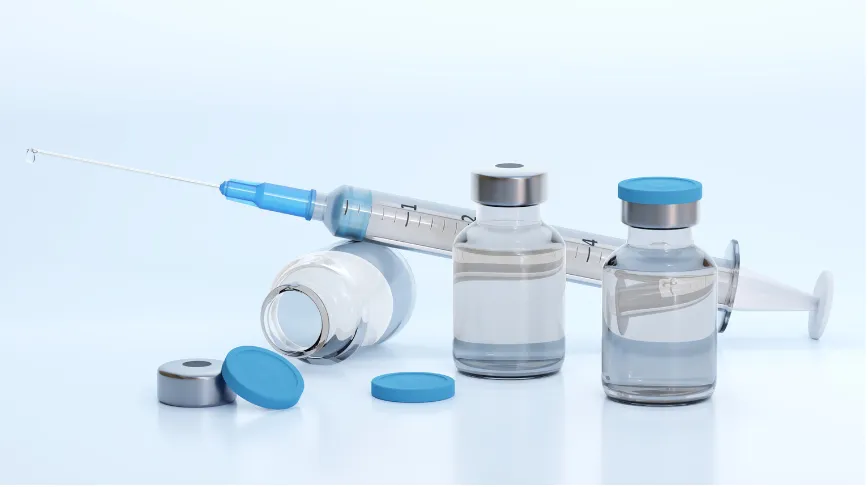How to Improve the Public’s Health
June 4, 2025

Of course everyone likes the idea of making America healthier. That has been the goal of a remarkable group of US-based scientists, public health experts, and healthcare providers for decades. So, how do the policies of the new US administration shape up in furthering that goal? Two of the first announced are, sadly, on shaky ground. Removing dyes from foods will probably have only a small impact on improving the nation’s health and taking a “break” from studying infectious diseases will likely make us sicker.
On the other hand, if we really want to strike out against things that are making us unhealthy, there are so many steps the government could take, things like limiting the availability of firearms, cleaning up the air we breathe, increasing federal health research funding, and making it financially desirable for doctors to specialize in primary care (including pediatrics).
The current administration is correct in identifying chronic illness as the leading cause of preventable premature death, disability, and illness in the US. We know a lot about the risk factors for many chronic diseases: tobacco smoking, alcohol consumption, obesity, and inactivity. These are tough problems to solve because doing so involves behavioral change. While we have been very successful at reducing the number of people who smoke cigarettes, millions of Americans still smoke. We have been much less successful in figuring out how to reduce alcohol consumption or guiding people to get more exercise. New medications may dramatically reduce the rates of overweight and obesity, risk factors for many chronic illnesses, including cardiovascular disease and cancer, but we still ingest far too many ultra-processed foods and too much sugar and salt. Hence, there is obviously a lot of room to work on ways of reducing the burden of chronic illness.
Food Dyes Are Likely Only a Small Part of the Problem
Removing food coloring, however, does not seem like the best place to begin taking on that challenge. The US Food and Drug Administration (FDA) currently allows food manufacturers to insert nine dyes in our food. The Biden administration initiated the process to remove one of them, Red Dye No. 3, and now the Secretary of Health and Human Services (HHS) has announced plans to force the removal of the other eight. Food companies appear poised to voluntarily comply with this plan. Food dyes have no nutritional value and from a health standpoint they won’t be missed. Yet, the data linking them to adverse effects on human health are shaky. Red Dye No. 3, for example, was shown to cause thyroid cancer in male rats at very high doses but has never been linked to cancer in humans. In fact, the hormonal mechanism by which the dye causes cancer in rats does not even exist in humans. So, it is unclear that banning it will lead to any significant improvement in human health.
Similarly, some research has linked food dyes to neurodevelopmental disorders, like attention deficit hyperactivity disorder (ADHD), in children. But experts say that evidence is considerably mixed and the evidence of actual harm to people is entirely unclear. Food colors may make some unhealthy foods more attractive to children, so eliminating them altogether could even have a health benefit. It is conceivable that banning the dyes could lead food manufacturers to use alternative methods of food coloring that are more expensive, hence increasing the cost of some products to consumers. Overall, from a health standpoint food dyes will not be missed, but it is also the case that banning them is unlikely to be a major advance in improving health.
We Don’t Want a “Break” From Researching Infectious Diseases
Similarly, the logic behind taking a “break” in infectious disease research remains elusive. The claim, made by the HHS Secretary during Congressional hearings that the US spends more money on infectious disease research than on studying chronic diseases is untrue. We are in fact fully capable of supporting high levels of important investigation into both infectious and chronic diseases and we absolutely cannot pause the former. The human species is engaged in a constant battle against a myriad of microorganisms—viruses, bacteria, fungi, protozoa—that aim to sicken and kill us. Antibiotics and vaccines are major reasons our lifespan is much longer now than a century ago but were we to lose focus on combating infectious perils they are poised to quickly regain the upper hand. As it is, malaria kills about 600,000 people a year, Dengue fever is rapidly approaching the US, and more American children died from the flu this year than any year since 2009. Nor is it true that we no longer must worry about Covid-19. The virus that causes Covid-19 seems to be causing less severe disease now, but experts warn that we must be on guard for possible changes in the virus that could make it once again a more serious threat. That means ongoing surveillance and research remain essential.
Critica Board of Directors member Dr. Jenn Dowd of the University of Oxford has pointed out that infectious diseases and chronic diseases are in many cases intimately linked. For example, the human papillomavirus (HCV), for which we now have a highly effective vaccine, causes cervical and other cancers. The vaccine for shingles appears to reduce the risk for dementia. Dowd recently wrote that “There is no separating infectious and chronic disease. Basic science research in both areas reinforces the other. A commitment to both can help us continue the amazing progress we’ve made in improving human health in the last century.”
There Are Many Ways to Improve Public Health
Rather than focusing on food dyes or halting critically important infectious disease research, there are lots of things the US government could do to make us healthier. Here are just a few:
- Make guns less available: 46,728 people died from gun-related injuries in the US in 2023. Study after study tells us that there is a relationship between firearm availability and firearm-related deaths. The US has the highest number of guns per capita in the world. Guns are now the leading cause of death among American children. Making guns less available is a clear way to make Americans healthier.
- Clean up the air we breathe: According to the American Lung Association’s 2025 “State of the Air” report, 46% of Americans—about 156 million people—breathe unhealthy air. Right now, about 350,000 people in the US die prematurely because of air pollution caused by burning fossil fuels. Instead of rolling back air quality monitoring, research on improving air quality, and rules that limit industrial and automobile air pollution—as the present director of the US Environmental Protection Agency (EPA) proposes—we need to redouble our efforts to improve air quality throughout the country.
- Increase funding to the National Institutes of Health (NIH): The proposed $18 billion cuts in NIH funding have the potential to cripple the US health research enterprise. Already there are reports that research studies at the NIH Clinical Center, the country’s largest hospital devoted solely to research, are severely hampered by policy changes and funding cuts. How does anyone expect us to continue to make progress in understanding the causes of and discovering new treatments for both infectious and chronic diseases with Draconian funding slashes like this? One way that has clearly always worked to make Americans healthier is through our support of cutting-edge research.
- Increase the number of primary care physicians: The US has a severe lack of primary care physicians. About 100 million people in the US do not have a primary care doctor. This is mainly because financial incentives push doctors toward medical specialties that garner higher monetary return. This is important because access to primary care physicians is linked to improved health outcomesWe need to revise the healthcare payment structure so that more physicians are incentivized to become primary care doctors instead of orthopedic surgeons or interventional cardiologists.
These are just a few of many suggestions we could offer that would clearly make America healthier and save lives. There are many other useful things we could do as well. The question is, how do we convince people in power to stop distracting us with false promises about what will make us feel better and live longer. It won’t come from just eliminating food dyes.
Related Posts

Cleaning Up the Air We Breathe Has Been a Successful Undertaking: We Must Not Gut the EPA
Posted in Environmental Health
There is talk in Washington about gutting the EPA. Here's why that's a bad idea.

Pregnancy-Related Deaths in the US Are a Health Crisis and a Moral Issue
Posted in Public health
Pregnancy-related deaths must be addressed from both a public health and moral imperative stance.

We Should Celebrate the Advances Vaccine Research Is Making: But Many Aren't
Posted in Health Communication
There are so many reasons to celebrate vaccines lately. So why are so many not partaking?